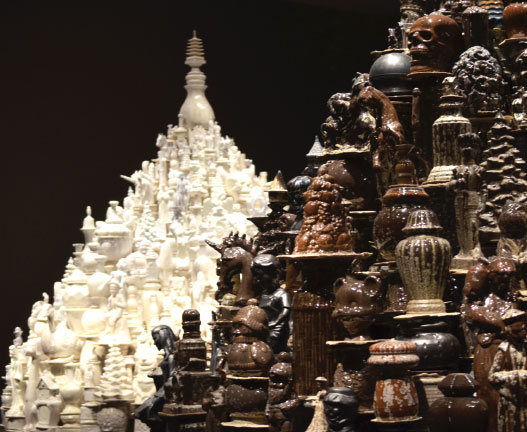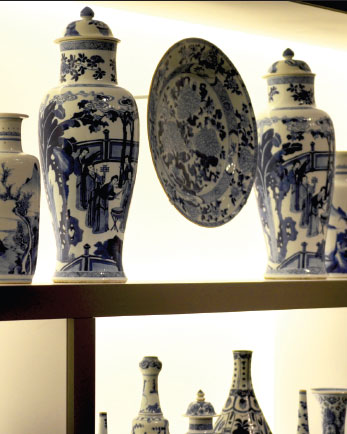Ceramics take center stage in DC
Most people don't give a second thought to the small porcelain pine tree that they pull out every Christmas season, or their neighbor's garden gnome that grins stupidly at them every time they walk by.
But these porcelain figures are really part of a larger trend in art history, one that can be traced back to Jingdezhen, China, the city that started a craze for pottery in Europe in the late nineteenth century.
American ceramic artist Walter McConnell began his series A Theory of Everything after visiting China in 2002 and seeing firsthand the jaw-dropping amount of ceramics produced in Jingdezhen, China's global center of the ceramics industry.
According to the Smithsonian's Sackler Gallery in Washington, where McConnell's latest works in the series - Chinamania - are on display, Jingdezhen retained its global prominence as the world's leading ceramics manufacturer through the late 1800s, as wealthy European aristocrats spent extravagant amounts of money amassing every bit of blue-and-white Chinese porcelain they could get their hands on.
|
The Sackler Gallery owns several pieces of Kangxi blue-and-white porcelain. These coveted pieces of pottery were sold throughout Europe during the late 19th century, though the best pieces were saved for the Chinese courts. Photos By Allan Fong / For China Daily |
"This became quite the trend in Victorian England," said a guide at the gallery. "If you wanted to be taken seriously as an art connoisseur, you collected blue and white porcelain."
The Sackler has set up an entire room displaying works of blue-and-white porcelain commonly called "China," including several pieces of Kangxi porcelain from the gallery's permanent collection.
McConnell's two sculptures, inspired by his visit to Jingdezhen, consist of hundreds of individual porcelain figurines, ranging from Winnie the Pooh and a bust of George Washington to prancing unicorns and a human skull. The two pieces stand about nine feet tall and are shaped like conical stupas, religiously significant icons used as sites of reflection and meditation in Buddhism.
|
Walter McConnell’s Chinamania: A Theory of Everything consists of two stupas: one white and one of earthy tones. Consisting of hundreds of porcelain sculptures, each stands nearly nine feet tall, with no narrative to the placement of each individual piece. |
"McConnell believes these stupas speak to the human psychology of collecting, especially in relation to the obsession over Chinese porcelain in the mid 19th century," the guide explained. "It's interesting to compare this obsession to the materialism that we see today, and how people attribute value to objects."
One stupa consists purely of glistening white ceramic figurines, balanced in shape and weight, creating a chaotic symmetry. In contrast, the other is composed of dark, earthy tones, also arranged in a seemingly random fashion. The effect is a "yin-yang" dynamic, each half the opposite of the other, but complementary as a singular work of art.
The individual porcelain figurines are nothing like the elegant pieces of China collected during the 1870's craze, nor do they resemble the holy relics that one might find at an authentic Buddhist stupa.
The molds used for Chinamania: A Theory of Everything were purchased by McConnell in secondhand stores or ordered from catalogues in the US, which he then cast himself. The figurines were then covered in crystalline glaze for a uniform glossy texture.
Individually, the figurines are not too interesting - mass-produced garden sculptures that went out of fashion decades ago. But taken as a whole, the work invites a discussion of society's obsession with consumerism.
"The fact that there is this juxtaposition of this traditionally religious sculpture and worthless mass produced trinkets grasps at this nation's desire to consume," said Leila, a visiting art student from New York. "Though it is very aesthetically pleasing in the sense that as disorderly and excessive as the concept of the piece is, it still seems like a unified work of art."
McConnell's work will be on display at the Sackler Gallery in Washington, DC until June 4, 2017.






















